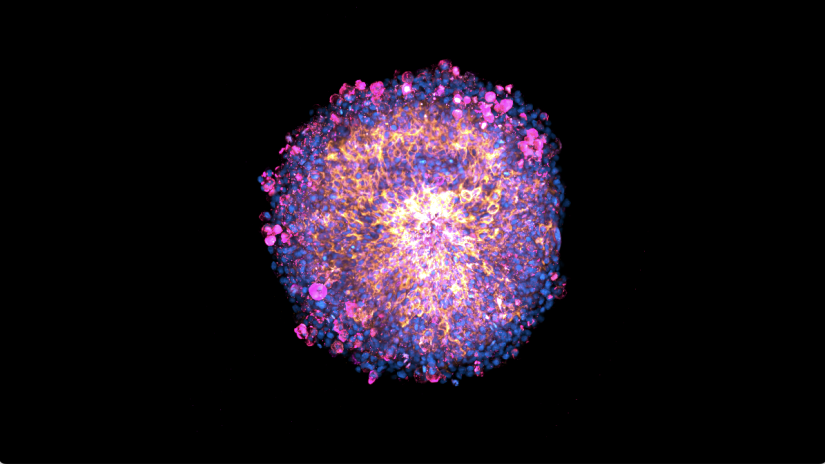A/Professor Lana McClements and her team have pioneered the world's first 3D-bioprinted trophoblast organoid model of an early placenta. This work has the potential to help future pregnancy complications such as preeclampsia be predicted, prevented and treated before they put lives at risk.
How 3D bioprinted placentas can inform pregnancy research

Lana joined the Research Café to explain what this breakthrough means for placenta and pregnancy research.
For the past 15 years, scientists have grown organoids from a wide range of human organs by taking stem cells and setting them in a gel. This gel mimics the tissue that cells are supported in and allows them to form clusters as they grow and divide.
To create the world’s first 3D bioprinted placenta, Lana, Dr Claire Richards and their team from the UTS School of Life Sciences worked closely with an industry partner, Inventia Life Sciences.
“In 2020, the UTS Faculty of Science procured Inventia’s RASTRUM 3D bioprinter. We collaborated very closely with the company and discussed our experimental design with Inventia’s biotechnologists throughout the process over the last six years,” Lana explained.
The process
Bioprinting is a type of 3D printing technology that uses living cells and cell-friendly materials to create 3D structures.
The researchers mixed trophoblast cells with a synthetic, controllable gel and 3D printed them into a culture dish in precise droplets, much like an ink-jet office printer. To make synthetic bio ink, the team developed a model that is completely animal free.
“Other teams are making organoids with Matrigel, which is animal derived. We were trying to move away from that and ensure that our organoid model would be completely animal free.”
The team compared placental organoids that were 3D bioprinted within synthetic PEG-based gels with organoids made via traditional manual methods with Matrigel, using a custom-made first trimester trophoblast cell line.
“We wanted to compare these two methods in terms of the expression of different markers representing specific subtypes of trophoblast cells and evaluate how representative these models are of the real human tissue from the first trimester placenta,” Lana explained.
Other teams are making organoids with Matrigel, which is animal derived. We were trying to move away from that and ensure that our organoid model would be completely animal free.
There are three main subtypes of trophoblast cells within the placenta, key cells that enable it to develop and grow to support the baby throughout pregnancy from the very beginning.
“In our research, we were able to show that we’ve created these three main subtypes within our bioprinted organoids, representative of the real early human placenta,” Lana said.
When the team compared their 3D-bioprinted placental organoids with those grown in Matrigel, they observed striking differences in the abundance of key trophoblast subtypes. This demonstrated that the cellular microenvironment, specifically the type of gel used, directly influences how trophoblasts differentiate, and which cell types are supported.

Lana acknowledged the input from many collaborators from the UTS Faculty of Science, the Faculty of Engineering and IT, the Proteomics, Metabolomics and Lipidomics Facility, Single Cell Genomics Facility and the Microbial Imaging Facility.
The team’s research was published in the journal Nature Communications in September 2025 and has since garnered significant interest in the international research community, including an invited The Conversation article, significant media interest (Altmetric: 274) and coverage in Nature Reviews Bioengineering .
About Lana
Associate Professor Lana McClements is the Cardio-Obstetrics Research group lead at UTS and a Heart Foundation Future Leader Fellow (2023-2027). Her group comprises eleven researchers including 5 PhDs, 2 ECRs, 1 Visiting Fellow and 3 Honours students. Their research aims to improve health outcomes for women and their offspring affected by cardiovascular disease in pregnancy and beyond. Lana is also the Chair of the Science Inclusion, Diversity and Equity (SIDE) Committee at UTS.
What’s next?
Read more about how 3D bioprinted mini placentas could transform pregnancy research.